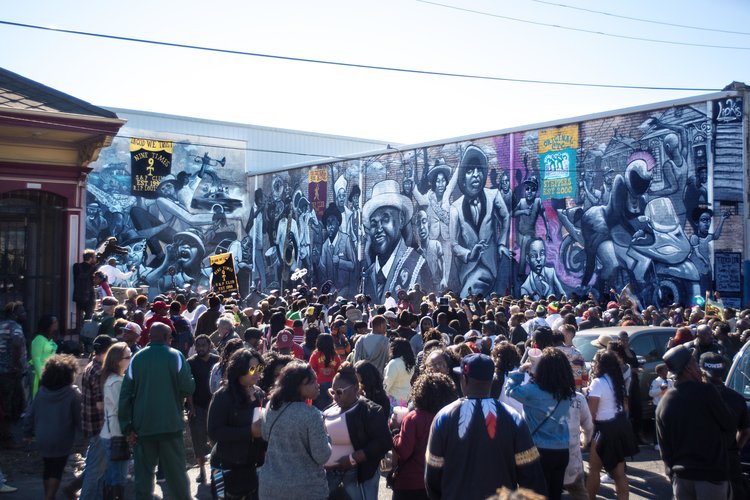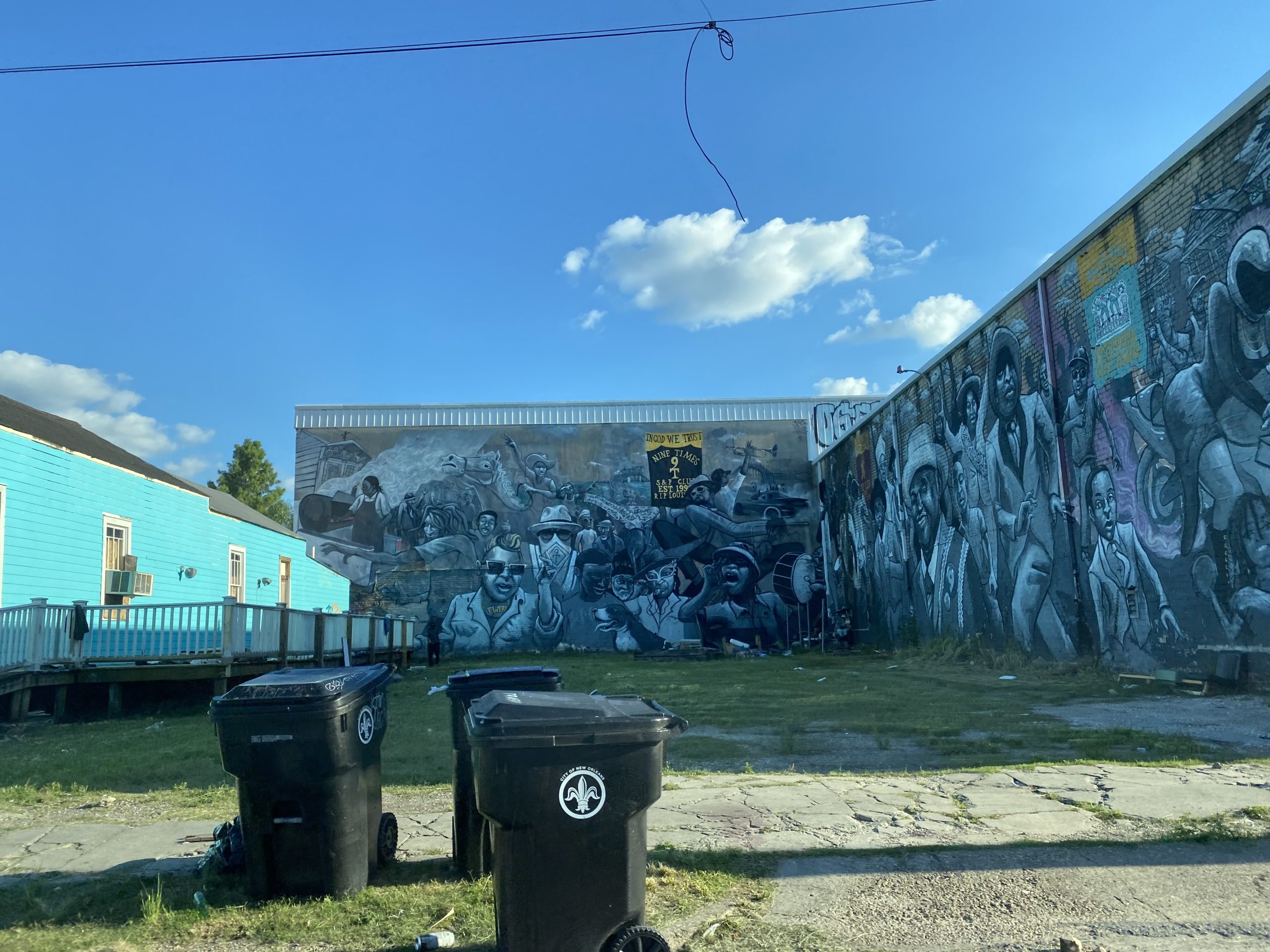
A community moment: The opening of Lipkins’ “Third Line” mural on the corner of St. Claude and Franklin
Editor’s Note: The following series “One Year Later” is a week-long series curated by Sarah Fox as part of the Digital Research Internship Program in partnership with ViaNolaVie. The DRI Program is a Newcomb Institute technology initiative for undergraduate students combining technology skillsets, feminist leadership, and the digital humanities.
As we enter March in 2021, many of us can’t help but feel like we haven’t even processed the events of last March. The COVID-19 pandemic quickly went from a small news story thousands of miles away to up close and personal as we packed our offices, dorms and apartments to move inside. Marking the one-year anniversary, “One Year Later” is not meant to further highlight things we miss or how our lives have been negatively affected, but to demonstrate the resilience of human nature and how we’ve adapted to extraordinary circumstances.
This articles profiles Henry Lipkis, a local New Orleans artist, and his adaptation to the city-wide lockdown. As a public muralist, he faced issues when the public was nowhere to be seen, so he came up with new ways to engage with the New Orleans art community. This article was originally published on ViaNolaVie on June 23, 2020.
Recently, public art muralist Henry Lipkis has been making frog-shaped bread. While this might seem creative’s natural response to COVID-19 city wide shutdowns, Lipkis is more than any creative. He possesses an inescapable creativity. He is unable to do anything uncreatively, even COVID-19. He is a beginning tattoo artist, a muralist, a Mardi Gras float designer (as his day job), a second line fan designer, a banner painter, and a frog-bread maker — to name a few.
Lipkis redefines art as we know it — not the art hung up in gallery walls trapped behind ticket fees — by engaging in the community he knows best: New Orleans. Lipkis focuses on creating public art, a responsibility that he takes very seriously. His art is not self-serving; rather, much of his art is an investment in the communities it is designed for.
He aims to make art “in a useful way that engages with the culture that already exists without trying to change anything,” Lipkis said. Lipkis’s approach to art is a powerful one, placing art within the context of communities that have been harmed by massive waves of gentrification.
But, what does public art mean when we are restricted from going in public? Lipkis has approached this time with the creativity and desire to serve his community that he brings to everything. He has been painting banners for striking workers, and even more recently he has been painting and constructing banners for protests. His creativity is evident even in a creative banner structure that he has developed.
He has also continued his “day job” — designing Mardi Gras floats. Float designers are still working in the sketch phase, so that job has shifted easily into the stay-at-home period – although, he does not seem affected by the uncertainty of Mardi Gras 2021. That has only been “a little bit” of work though. Many of his other planned projects have been postponed indefinitely, but his attitude about this is forward-thinking.

Lipkis’ “Third Line” mural, fitting into the community at the corner of St. Claude and Franklin in the midst of COVID-19 shut-downs.
Though Lipkis, has found “it’s pretty hard to get inspired when … your mind is rushing through … the potential collapse of … everything,” he has directed himself towards thinking about “what types of art [he] can do in that circumstance,” no matter how things go. He hopes to figure out how he “could continue to make a living and help create value when everything is upside down.” This is an important attitude in this time of uncertainty. He has shifted his pre-existing artistic goal – of working on “canvases” that already exist in the world – into learning how to tattoo.
While Lipkis did not shy away from acknowledging that this is a difficult time to be an artist, he also has not taken this time sitting down. During the period of COVID-19, he has proven himself to be just as creative in life as he is in his numerous art forms.
 NOLAbeings Multimedia artist Claire Bangser created NOLAbeings as a portrait-based story project that marries...
NOLAbeings Multimedia artist Claire Bangser created NOLAbeings as a portrait-based story project that marries...  Voodoo in New Orleans: Reviving history: New Orleans fortune telling This article takes a deep dive into the history of Voodoo in New Orleans, its hybridization with Catholicism, and its present-day place in the city's culture. The author visits fortune-tellers in the French Quarter, using their guidance as a tool for introspection rather than a deterministic predictor of the future. Through her experiences in New Orleans, the author feels a mystical connection to both the past and the future.
Voodoo in New Orleans: Reviving history: New Orleans fortune telling This article takes a deep dive into the history of Voodoo in New Orleans, its hybridization with Catholicism, and its present-day place in the city's culture. The author visits fortune-tellers in the French Quarter, using their guidance as a tool for introspection rather than a deterministic predictor of the future. Through her experiences in New Orleans, the author feels a mystical connection to both the past and the future. 